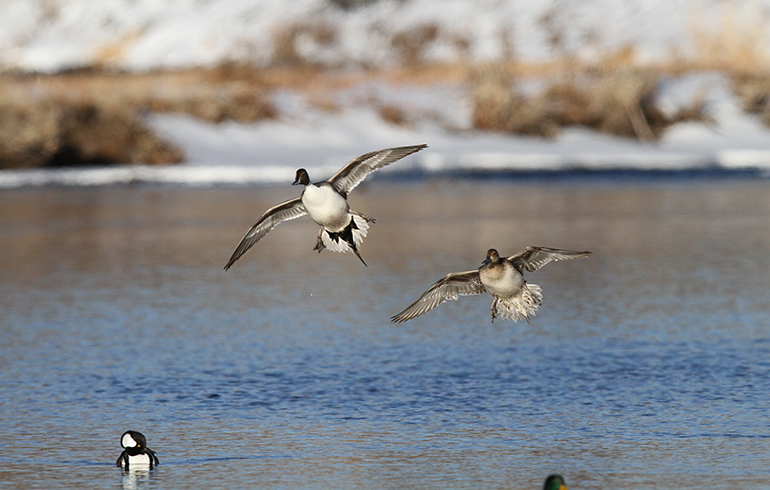Five Tips for Shooting More Waterfowl
Since 1886, Winchester has been making shotshells that have helped hunters fill their limit on waterfowl anytime the ducks and geese are flying.
From the early days of capturing the latest innovations to make shells better (think smokeless powders and later plastic hulls) to the modern wonder, BlindSide, which utilizes stacked hexadhedron-shaped steel shot and Winchester’s patented Diamond Cut wad. But even with the best shells ever made loaded in your shotgun, it does you no good if you don’t follow proper shooting technique and fail to properly lead the fast flying target ducks and geese present.

Here are five waterfowl shooting tips to help you fill your limit each time you hit the flooded timber or blind.
- Dress for the Weather—Not just when you hunt, but when you practice too. Most hunters may get a little time behind the shotgun during the warmer pre-season of summer on the clays course or skeet range, only to find their shooting off, when they are bundled in heavy coats, thick gloves and half frozen during the season. The trick? Wait until that first colder weather hits and roll out to the range to bust clays dressed as you will be when actually hunting. Clothing can change the way you mount your shotgun and even the way it fits you, not to mention, you want to be sure you have a good feel on your trigger no matter what gloves you might be wearing.

- Pump It Up—While modern semi-autos are as reliable as technology can deliver when properly cared for, for the ultimate in workhorse reliability many shooters opt for a pump-action shotgun. Good waterfowl conditions often translate into a presence of water, ice and mud—all elements that can gum an action up—a hunter can typically strong arm a pump gun and work the action even if it is filthy. A bonus: most pump shotguns are much less costly than semi-autos while delivering all the features today’s semis have that make the guns pattern tighter and more accurately.

- Choose Your Target—It’s easy to get flustered when a whole flock of ducks or geese are sliding straight into your spread, but it’s critical to not get mentally overloaded and start thinking of doubles or even triples until you’ve picked out that first bird you will shoot and properly swing on it. Flock busting often does just that, busts the flock into different directions of flight, while the only thing you collect are your empty hulls.

- Swing, Swing—There’s no magic formula for figuring proper lead; it’s a function of speed of the bird and the load, as well as distance and angle of approach to the shooter. But for many accomplished shooters, when birds are crossing, they simply swing the gun, catch up to the bird in flight (and along its proper track) and swing through the target firing as the point of aim swings out past the bird. The key is don’t quit swinging as you shoot, but to keep the motion going as you fire. For incomers, simply raise the barrel to the target and fire as the end of your barrel blots the duck or goose out of sight.
- By a Long Shot—One key thing on those crossing shots out at the edge of your effective shooting range—lead much more than you might think. Some birds may require as much as three or four feet of lead. The perfect place to practice crossing shots is on a skeet range. Writer and expert waterfowler Wade Bourne recommends standing about 10 yards behind the middle station on the range and practicing crossing shots from both directions to experiment with lead and improve your cross-shot confidence.

Winchester Ammunition
A world leader in delivering innovative products, Winchester is The American Legend, a brand built on integrity, hard work, and a deep focus on its loyal customers.



